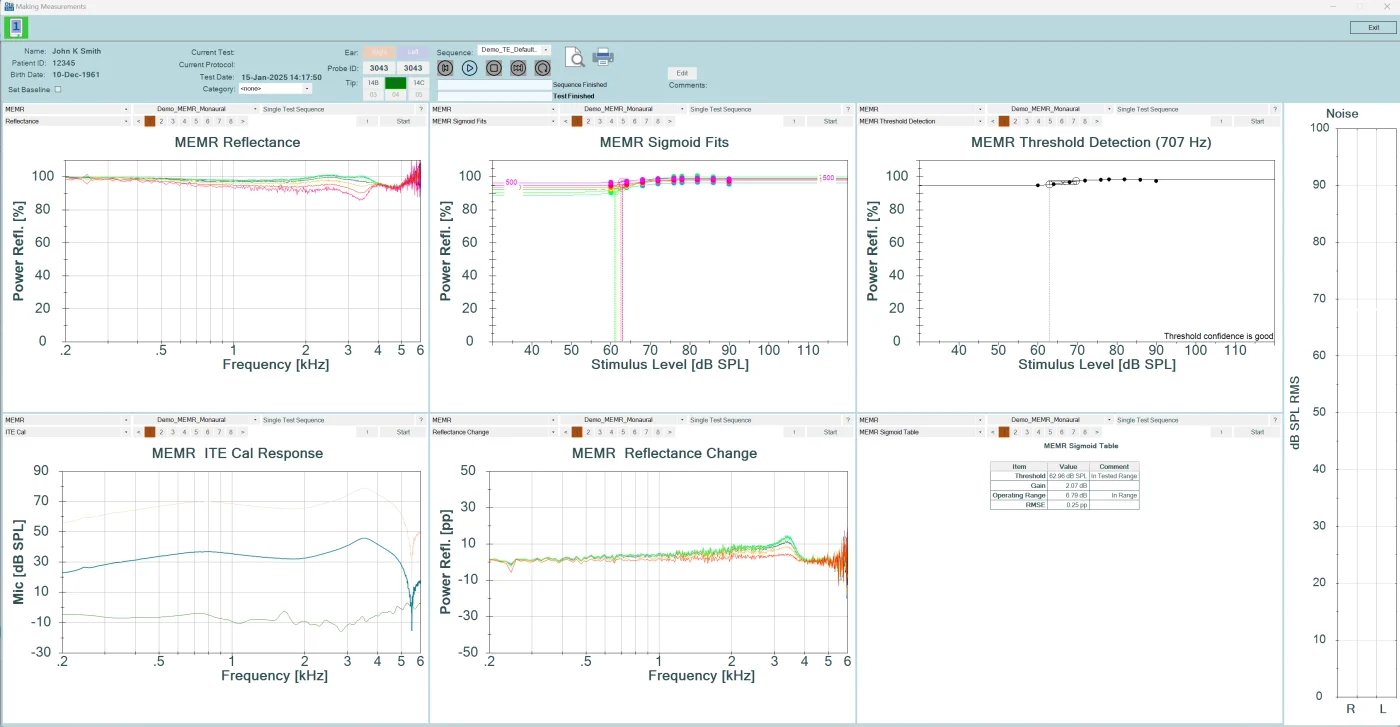

Modules
MEMR
MEMR testing
The middle-ear muscle reflex (MEMR) can be evoked ipsilaterally (monaurally), contralaterally, and binaurally (bilaterally) with acoustic stimuli applied to one or both ears.
When activated, the reflex changes the stiffness of the middle ear. By conducting a series of wideband immittance MEPA tests with varying stimulus levels, the reflex may be detected from changes in the reflectance, and its threshold and related parameters estimated. Threshold estimates are typically more sensitive than those made with standard tympanometry. The clinical utility is being established with human participant studies.
Developed in collaboration with Vanderbilt University, this module is currently research-only. It has been used and tested in all age groups (newborns, infants, children, and adults and across a variety of pathologies.
Types of MEMR

Ipsilateral MEMR
Only one ear is tested at a time. The stimulus level varies from 60 to 90 dB SPL. Changes in reflectance are detected in the test ear and are used to estimate the ipsilateral MEMR. Both the monaural and binaural OtoStat systems can make ipsilateral MEMR measurements.
Contralateral MEMR
Both ears are tested at the same time. The ipsilateral ear receives a series of tests where the stimulus level varies from 60 to 90 dB SPL. The contralateral ear receives a series of tests synchronized with the ipsilateral ear; however, the stimulus level is set at one value (e.g., 60 dB SPL). A MEMR may be measured in each ear, but the response in the contralateral ear is of the most interest. It estimates the contralateral MEMR unconfounded with the ipsilateral component because the ipsilateral stimulus level was constant. Only the binaural OtoStat system can make contralateral MEMR measurements, as the test requires two probes.
Binaural MEMR
Both ears are tested at the same time. Both ears receive a series of MEPA tests where the stimulus level varies from 60 to 90 dB SPL, and the tests and levels are synchronized between ears. A MEMR may be measured in each ear. This response is a mix of ipsilateral and contralateral components for each ear. Only the binaural OtoStat system can measure binaural MEMR, as the test requires two probes.
MEMR on OtoStat
To run OtoStat+MEMR you need a monaural or binaural OtoStat with the MEMR Measurement Module.
- Preset measurement protocols included.
- Measure ipsilateral MEMR (monaural or binaural system), contralateral MEMR (binaural OtoStat), and binaural MEMR (binaural OtoStat).
- Save your favorite protocols by name.
- Automated threshold detection, with feedback on threshold quality.
- Multiple views during real time data collection and in data review.
- In-the-ear probe calibration.
- Stopping rules terminate the test early once measurement quality is achieved.
- Define the half-octave band for display but obtain data for all bands.
- Detailed results export provides extensive data for offline analysis.